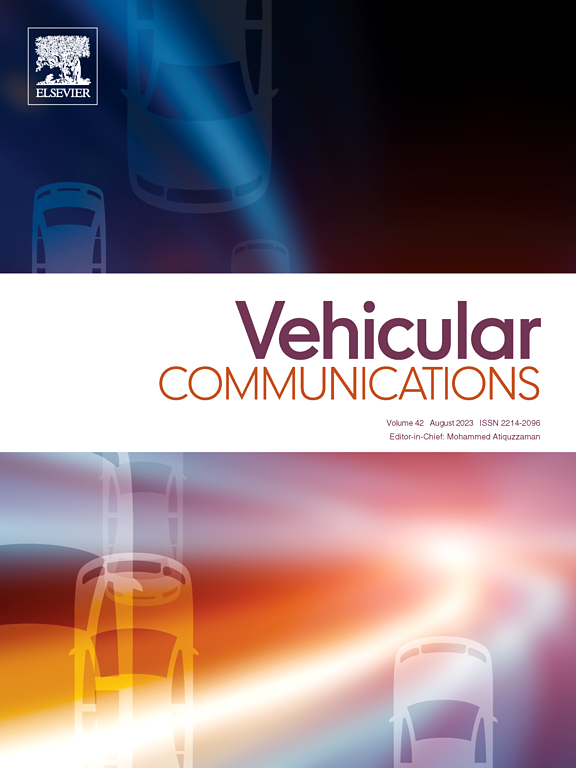Vehicles-digital twins matching scheme in vehicular edge computing networks: A hierarchical DRL approach
IF 6.5
2区 计算机科学
Q1 TELECOMMUNICATIONS
引用次数: 0
Abstract
Digital twin (DT) provides a powerful framework to enable various intelligence applications in vehicular edge computing networks. DT servers are used to model and optimize the resource allocation of the whole dynamic system, to provide low latency services for the vehicles. However, the dynamic topology and varying network status make it a challenge to construct the DT model timely, especially in the urban traffic scenario, both the base station (BS) and roadside unit (RSU) cover the ground vehicles overlapped. In this paper, we propose an optimal vehicles-DT servers matching scheme in urban road networks with respect to the dynamic topology and time-varying network status, the DT model selection, building, synchronization and migration latencies are analyzed and optimized mainly. To deal with the complex non-convex problem, we propose a hierarchical reinforcement learning-based solution scheme. The formulated joint optimization problem is decomposed into two subproblems: DT model building and migration. We solve these two subproblems orderly, an improved hierarchical deep reinforcement learning (HDRL)-based algorithm is proposed to find the final optimal solutions. Numerical results demonstrate the convergence of the proposed algorithms, and the effectiveness of the proposed schemes in reducing the system latency.
车辆边缘计算网络中车辆-数字孪生匹配方案:一种分层DRL方法
数字孪生(DT)为实现车辆边缘计算网络中的各种智能应用提供了一个强大的框架。利用DT服务器对整个动态系统的资源分配进行建模和优化,为车辆提供低延迟的服务。然而,由于网络拓扑结构的动态变化和网络状态的变化,使得DT模型的及时构建成为一个挑战,特别是在城市交通场景中,基站(BS)和路边单元(RSU)同时覆盖着重叠的地面车辆。本文针对城市道路网络的动态拓扑和时变网络状态,提出了一种最优的车辆-DT服务器匹配方案,重点分析和优化了DT模型的选择、构建、同步和迁移延迟。为了处理复杂的非凸问题,我们提出了一种基于分层强化学习的解决方案。将所提出的联合优化问题分解为DT模型建立和迁移两个子问题。在有序求解这两个子问题的基础上,提出了一种改进的基于层次深度强化学习(HDRL)的算法来寻找最终的最优解。数值结果证明了所提算法的收敛性,以及所提方案在降低系统延迟方面的有效性。
本文章由计算机程序翻译,如有差异,请以英文原文为准。
求助全文
约1分钟内获得全文
求助全文
来源期刊

Vehicular Communications
Engineering-Electrical and Electronic Engineering
CiteScore
12.70
自引率
10.40%
发文量
88
审稿时长
62 days
期刊介绍:
Vehicular communications is a growing area of communications between vehicles and including roadside communication infrastructure. Advances in wireless communications are making possible sharing of information through real time communications between vehicles and infrastructure. This has led to applications to increase safety of vehicles and communication between passengers and the Internet. Standardization efforts on vehicular communication are also underway to make vehicular transportation safer, greener and easier.
The aim of the journal is to publish high quality peer–reviewed papers in the area of vehicular communications. The scope encompasses all types of communications involving vehicles, including vehicle–to–vehicle and vehicle–to–infrastructure. The scope includes (but not limited to) the following topics related to vehicular communications:
Vehicle to vehicle and vehicle to infrastructure communications
Channel modelling, modulating and coding
Congestion Control and scalability issues
Protocol design, testing and verification
Routing in vehicular networks
Security issues and countermeasures
Deployment and field testing
Reducing energy consumption and enhancing safety of vehicles
Wireless in–car networks
Data collection and dissemination methods
Mobility and handover issues
Safety and driver assistance applications
UAV
Underwater communications
Autonomous cooperative driving
Social networks
Internet of vehicles
Standardization of protocols.
 求助内容:
求助内容: 应助结果提醒方式:
应助结果提醒方式:


